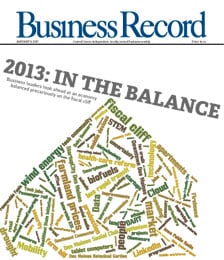Caution: Pull the trigger on El Paso at your own risk

Dear Mr. Berko:
I think I would like to buy 1,500 shares of El Paso Corp., which traded in the mid-$70s just a few years ago. I bought 200 shares at $32 in early January 2000 and sold it nearly 12 months later at $72. A lot has changed since then, but I would like to invest about $10,000 and buy 1,500 shares at $7.27 as a gamble because I think the stock could double in a year or so. Please give me your opinion.
B.W., Durham, N.C.
Dear B.W.: “Out in the West Texas town of El Paso,” not far from Rosa’s cantina, is El Paso Corp. (EP-$7.27), which “shocked” investors “by the foul, evil deed” when last January it cut its estimate of proven natural-gas reserves by 1.8 trillion cubic feet.
“Off to my right I see five mounted cowboys, off to my left ride a dozen or more,” and they shot holes in the stock, crashing it from $9.50 to $6, where it hit the floor.
Certainly you’ve heard that old truism by Marty Robbins: “When you see one cockroach run across the kitchen floor, you can be sure that there will be many more.” Well, as you know, Shell Oil recently confessed to reserve inflation, and I suspect that others will contritely follow.
El Paso, back in the year 2000, was hissing on top of the world when the success of its energy-trading business sent its shares zooming up to the mid-$70s on revenues of $57 billion. Then, less than two years later, a leak of sizable proportion ignominiously imploded EP to the $3.50-$4 level.
Today, sans its odious trading business, EP generates $6.8 billion in revenues by gathering, transporting, processing and storing the messy stuff. EP also explores for natural gas and oil, participates in the power-generation business in a small but profitable manner, develops and operates energy infrastructure facilities and legitimately engages (very surgically and sanely) in the marketing of energy commodities.
The reduction of EP’s energy reserves by 1.8 trillion cubic feet might create a one-time non-cash charge to the company. Though this won’t affect short-term operations, it does shorten the life of EP’s asset base. So it is imperative that management quickly discover sources of asset growth.
The company’s innocent misstatement — or incorrigible lie — might bring a flurry of class-action lawsuits from shark-like lawyers, and there’s little doubt that the Securities and Exchange Commission will dig its talons deep into EP. So management announced that it must delay its 10-K filing to include prior-year financial data. All these little peccadilloes have certainly put the kibosh on the stock.
When is the best time to buy a stock? The answer is: “When nobody wants it and there’s corporate blood running in the gutter.” Well, it’s happening now, and EP might be (I said “might be”) a compelling 18- to 24-month speculation. In fact, I think EP could potentially double in that time.
Though EP has $23 billion in debt, management is making good progress selling assets and has nearly $4.5 billion in planned sales this year. More debt reduction via the sales of foreign properties and non-core assets are planned, which should increase free cash flow and improve EP’s lowly credit rating.
EP owns the largest natural gas pipeline in North America, which puts this company in an excellent position to benefit from increasing demand and higher prices for an inexpensive and clean-burning fuel.
EP’s paper is rated junk and certainly not a fit investment for conservative, God-fearing investors who are unable to assume significantly above-average risks in exchange for an extremely remote probability of above-average gains. According to Value Line Investment Survey, EP lost a bundle in 2003 but should earn 30 cents this year and possibly 45 cents in 2005. Although the dividend has been cut from 87 cents in 2002, the current 16-cent dividend yields 2.2 percent. I think within the next few years, EP will pull itself up from the mud and return to a semblance of its former self.
So, yes, I think EP is here to stay and a 1,500-share purchase of the common could possibly double in the coming two years. The shares appear to have alluring and compelling potential for venturesome investors such as you.
I must caution you that its weak financials and difficult earnings predictability – plus, potentially, more bad news — are among the negatives that could implode the stock again. So go and do the deed and I hope you’re successful.
However, there may be some readers who would like to earn an attractive yield while they’re waiting for the eventual payoff. They can consider El Paso Trust Convertible Preferred C (EP+C-$28.85). The $2.375 dividend on this convertible preferred gives the owners an 8.23 percent return while they wait for good things to happen.
Please address your financial questions to Malcolm Berko, P.O. Box 1416, Boca Raton, Fla. 33429 or e-mail him at malber@adelphia.net.






